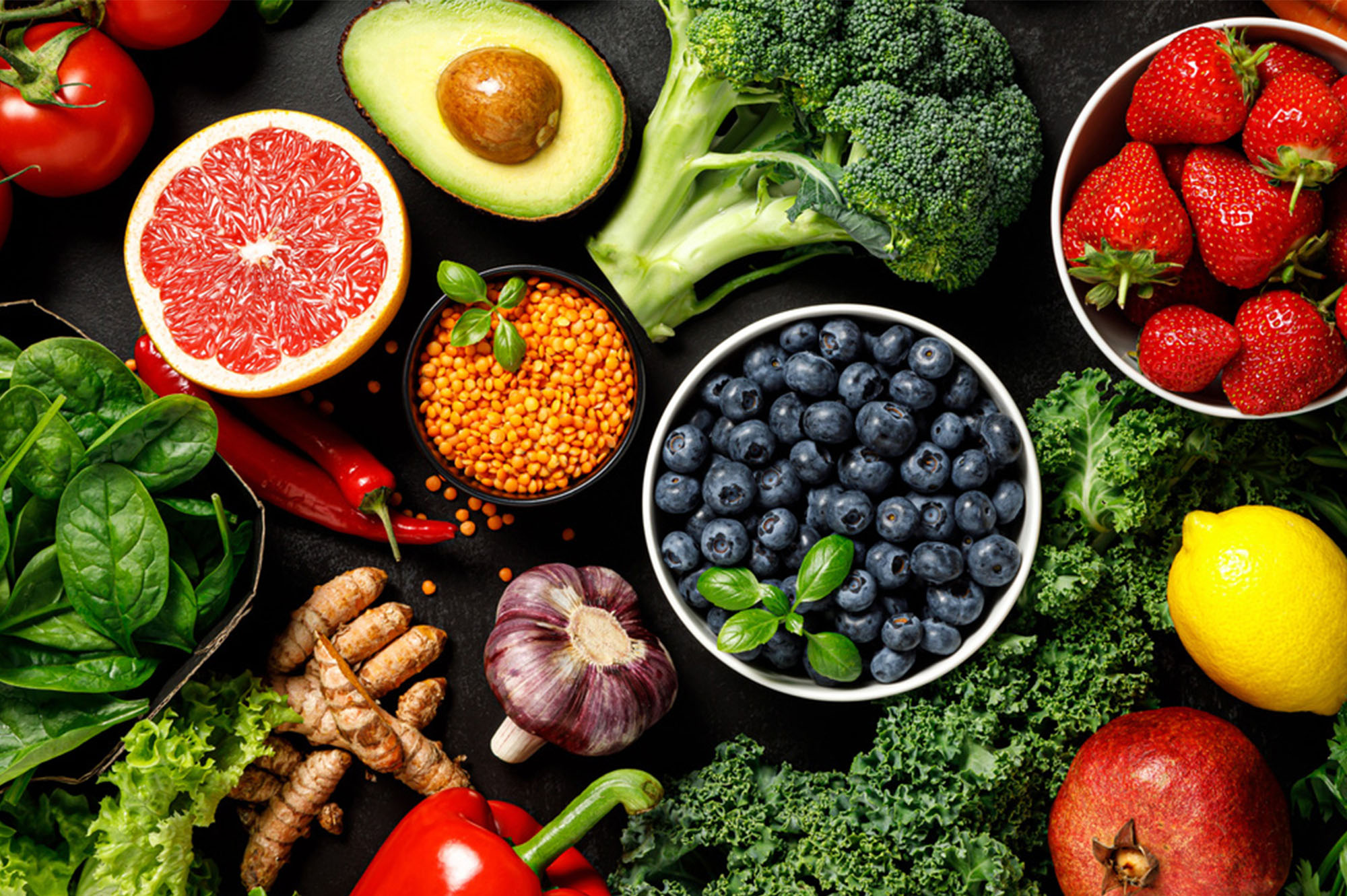Average Weight of Fruits and Vegetables: A Shopping Guide
Ever wondered how much your favorite fruits and vegetables weigh? Whether you’re shopping, managing your food intake, or just curious, knowing the average weights of these everyday essentials can be surprisingly useful. From the petite blueberry at 0.02 oz (0.5 g) to the hefty jackfruit tipping the scales at 15 lbs (6.8 kg), each fruit and vegetable has its own unique weight profile.
Understanding these weights can help you make informed decisions in the grocery store and the kitchen. If you’re planning a meal or snack, having an idea of the average weight of an apple (6.8 oz or 195 g) or a banana (4.2 oz or 120 g) can guide your portion sizes and nutritional planning. With predictable weight ranges based on growth patterns, you’ll find it easier to estimate quantities and manage your diet effectively. Dive into the fascinating world of fruit and vegetable weights and discover how this knowledge can enhance your daily life.
Key Takeaways
- Understanding the average weights of fruits and vegetables can enhance grocery shopping and meal preparation, leading to informed portion control and nutritional planning.
- The weight of produce is influenced by factors such as size, growth conditions, variety, and ripeness, affecting both shopping choices and dietary management.
- Knowing the average weights of common fruits and vegetables aids in estimating costs, adhering to recipe requirements, and achieving accurate serving sizes for balanced nutrition.
- Tools like digital kitchen scales help ensure precise weight measurement, crucial for maintaining consistency in portion sizes and meeting dietary goals.
- Weight variations in fruits and vegetables affect their nutritional content, making it essential to adjust meal planning based on produce weights to support health and nutrition objectives.
Understanding Average Weights
Grasping the concept of average weights in fruits and vegetables can transform your shopping and cooking experiences. By analyzing these weights, it’s easier to make informed decisions about portions and budgeting.
Factors Influencing Weight
Multiple factors determine the weight of fruits and vegetables. Size is an obvious factor; larger variations generally weigh more. Growth conditions like soil quality, rainfall, and temperature also play roles. For instance, a well-watered apple tree may produce heavier apples compared to one in a drier climate. Varieties can differ significantly; consider the difference between a small Gala apple and a large Honeycrisp. The stage of ripeness impacts weight as well; overripe fruit may weigh less due to moisture loss. All these factors contribute to the diversity in average weights.
Importance of Knowing Weights
Understanding the average weights serves numerous purposes. When shopping, knowing weights can help you estimate the cost as produce is often priced per pound. For recipes requiring specific amounts, it’s crucial to align your purchases with the listed requirements. If a pie recipe demands two pounds of apples, you’d know that approximately five to six medium-sized apples would suffice. This helps avoid under or over-purchasing. For diet plans, the weight ensures accurate serving sizes to meet nutritional goals. It assists in managing intake for weight loss or maintenance effectively. Knowing weights optimizes your approach to meal preparation and dietary planning.
Average Weights of Common Fruits
Understanding the average weights of fruits can greatly assist in meal planning, shopping, and food management. Recognizing these weights helps you in portion control and nutritional calculations.
Detailed Weights for Popular Fruits
Consider the average weights of some commonly consumed fruits:
- Apple: Weighs about 6.8 ounces (195 grams).
- Banana: Weighs around 4.2 ounces (120 grams).
- Grapefruit: Weighs approximately 8.7 ounces (246 grams).
- Orange: Typical weight is 4.6 ounces (130 grams).
- Pear: Weighs about 6.3 ounces (180 grams).
- Peach: Weighs around 5.3 ounces (150 grams).
- Pineapple: Usually weighs 3.5 pounds (1.59 kg).
- Strawberry: Weighs just 0.4 ounces (12 grams).
- Watermelon: Can weigh as much as 20 pounds (9 kg).
Serving Size Considerations
Serving sizes differ based on dietary guidelines and can impact your health and nutrition. For instance:
- Medium-sized apple, pear, orange, peach, or nectarine: Classified as one medium fruit serving.
- Large banana: Considered a single serving.
- Medium grapefruit: Typically a serving if it’s about 4 inches across.
- Strawberries: 8 large ones make up one serving.
Understanding these weights and serving sizes aids in making informed dietary choices. It’s essential to balance portions to meet nutritional needs without over- or under-consuming these common fruits.
Average Weights of Common Vegetables
Understanding the average weights of common vegetables can help you in meal planning and portion control. It’s essential to grasp these details to ensure precise dietary management and budgeting.
Detailed Weights for Popular Vegetables
- Artichoke: Weighs about 13 ounces or 368 grams.
- Asparagus: An individual spear approximately weighs 0.8 ounces or 22 grams. A pyramid crate holds 32 pounds.
- Garlic: Each clove is roughly 0.18 ounces or 5 grams.
- Green Beans: Single beans weigh around 0.18 ounces or 5 grams. A bushel weighs between 28 to 30 pounds.
- Beets: Weigh about 4 ounces or 113 grams each.
- Bell Pepper: Average weight is about 6 ounces or 170 grams.
- Broccoli: Usually weighs around 8 ounces or 225 grams per head.
- Brussels Sprouts: Typically weigh about 0.5 ounces or 14 grams each.
- Cabbage: One head can weigh up to 2 pounds or 907 grams.
- Carrots: Average around 2.1 ounces or 60 grams each.
- Cauliflower: A head typically weighs 1.1 pounds or 500 grams.
- Celery: Stalks weigh approximately 1 pound or 450 grams.
- Corn: An ear of corn weighs roughly 6.3 ounces or 180 grams.
- Cucumber: Weighs around 8.8 ounces or 250 grams.
- Kale: A bunch generally weighs about 7 ounces or 198 grams.
- Lettuce: Heads weigh approximately 1.8 pounds or 800 grams.
- Mushrooms (White): About 0.53 ounces or 15 grams per piece.
- Onion (Yellow): Weigh around 5.6 ounces or 160 grams each.
- Parsnip: Weighs about 4 ounces or 115 grams.
- Peas: An individual pea weighs nearly 0.01 ounces or 0.2 grams.
- Potato: Each one weighs roughly 6.5 ounces or 184 grams.
- Snow Pea: Typically weigh about 0.1 ounces or 2.5 grams each.
- Spinach: One cup is around 1 ounce or 30 grams.
- Squash (Yellow): Weighs about 7 ounces or 200 grams per piece.
- Squash (Butternut): Generally weighs around 2.5 pounds or 1.1 kilograms.
- Sweet Potato: Typical weight is approximately 4 ounces or 113 grams.
- Tomato: Weighs about 6 ounces or 170 grams.
- Zucchini: Usually weighs around 7 ounces or 200 grams.
Serving Size Considerations
When considering serving sizes, bear in mind that these are essential for fulfilling specific dietary goals. A typical serving of raw leafy vegetables, like spinach, fills two cups, while a cup of fresh, frozen, or canned vegetables counts as one serving. Knowing these measurements supports accurate meal preparation and nutritional balance. Recognizing how these portions fit into your daily eating pattern enables better dietary planning and helps meet health and fitness objectives efficiently.
Measuring and Weighing Techniques
Accurate measurement of fruits and vegetables influences portion control and nutritional management. Understanding the tools and methods ensures you achieve consistency in meal preparation.
Tools for Accurate Measurement
Accurate scales are essential for weighing produce. The equipment must meet legal standards to ensure reliability. Refer to resources like Weighing Equipment for Legal Use to verify compliance. You might consider digital kitchen scales for their precision and ease of use at home. They often come with tare functions, allowing you to subtract the container’s weight from the total.
Conversions and Equivalents
Understanding conversions simplifies calculations in meal planning. For instance, 1 pound equals 16 ounces. Many recipes use grams; therefore, knowing that 1 ounce equals 28.35 grams helps. Use these conversions to translate weights into volume measurements when necessary. Familiarity with conversions aids in comparing prices and nutritional content effectively.
Nutritional Impact of Weight Variation
Weight significantly influences the nutritional content of fruits and vegetables. By understanding these variations, you can make informed dietary decisions that align with your health goals and nutritional needs.
How Weight Affects Nutrition
Each fruit and vegetable’s weight corresponds to its nutrient density. Heavier pieces, like a medium grapefruit at 8.7 oz, generally contain more vitamins and minerals than lighter ones. For example:
- Grapefruit: Provides high vitamin C content.
- Broccoli: At 8 oz per head, offers significant fiber and vitamin K.
- Spinach: Although light at 1 oz per cup, high in iron and calcium.
Weight variations also impact calorie content. Larger items may contribute more calories, crucial when managing weight. Grapes illustrate this, as 20 grapes equal about 3.6 oz and can add up in calories.
Adjusting Diet Based on Weight
Adjusting your diet based on produce weight can enhance nutritional balance. If aiming for weight loss, opting for lighter, non-starchy vegetables like carrots (2.1 oz) can reduce calorie intake while providing essential nutrients.
- Consider Portion Sizes: When you’re meal planning, focus on serving sizes aligning with dietary guidelines, using average weights as a reference.
- Evaluate Ingredients: If you’re integrating more fruit into meals, balance nutritional intake by combining fruits with varying weights and nutrient profiles.
- Optimize Nutritional Absorption: For optimal nutrient absorption, use a mix of produce types. Lineups like kiwi (2.65 oz) and pears (6.3 oz) offer diverse nutrient benefits.
Recognizing the nutritional impact linked to weight helps you align your meals with health objectives, driving better health outcomes.
Conclusion
Understanding the average weight of fruits and vegetables is a powerful tool in enhancing your shopping, cooking, and dietary planning. By familiarizing yourself with the weights of your favorite produce, you can make informed decisions that align with your nutritional goals and budget. This knowledge empowers you to manage portion sizes effectively and optimize meal preparation. Whether you’re aiming for better health outcomes or simply more efficient grocery shopping, grasping the weight profiles of fruits and vegetables is essential. Embrace this understanding to transform your daily habits and achieve a balanced, nutritious lifestyle.







